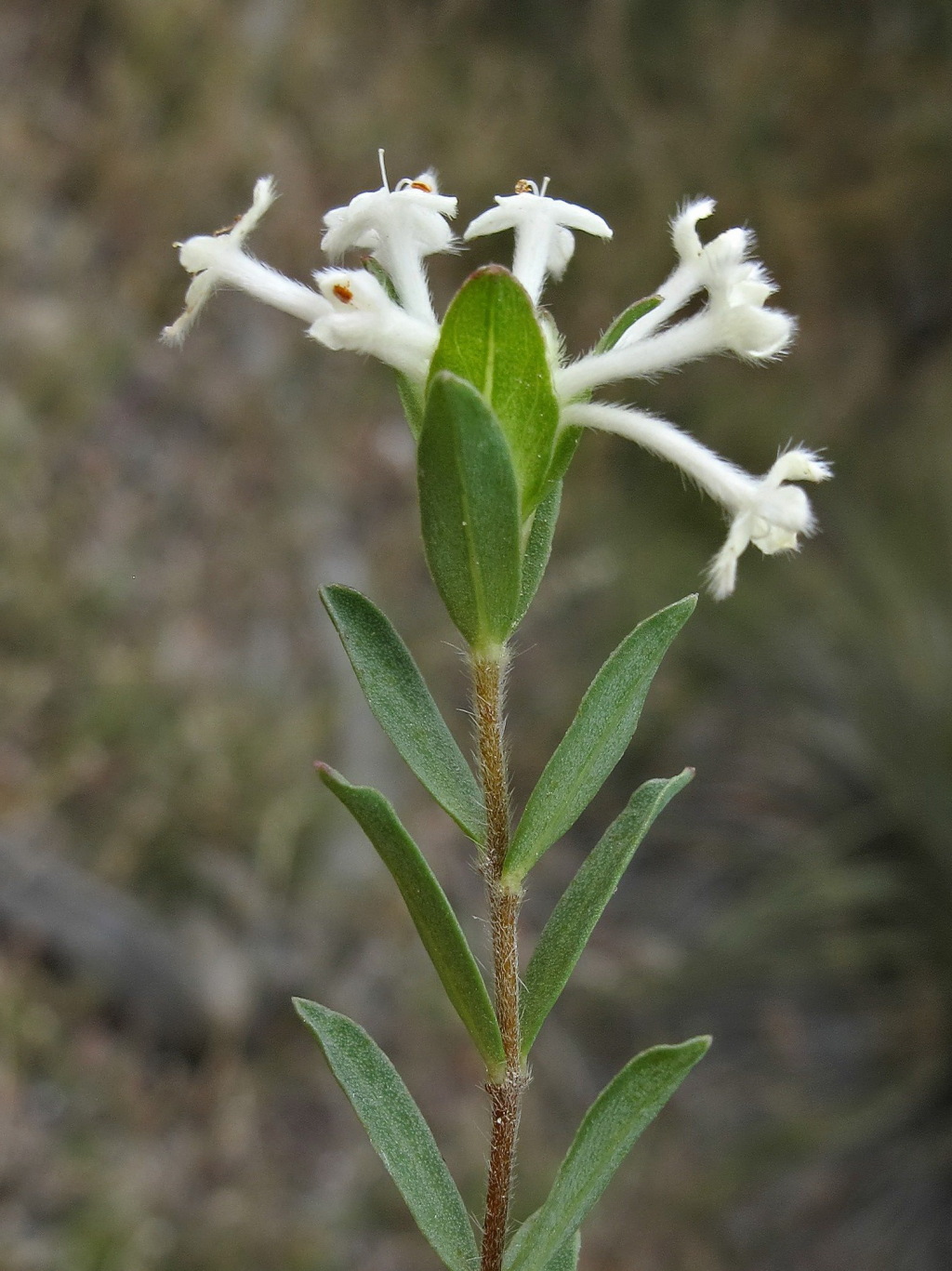Pimelea humilis
R.Br. Common Rice-flowerShrub 5–30(–50) cm high; young stems densely hairy; nodes prominent. Leaves opposite, shortly petiolate, usually narrowly elliptic or elliptic, 6–16 mm long, 1–9 mm wide, concolorous or paler beneath, glabrous. Inflorescence terminal, a many-flowered head; involucral bracts 4 or 6, sessile, more or less ovate, 6–18 mm long, 3–11 mm wide, glabrous outside (or a few hairs at apex), hairy towards midrib inside, yellow at base, green above. Flowers bisexual or female, glabrous at base outside, with dense antrorse hairs above, creamy white; floral tube 8–15 mm long, style-portion longer than ovary-portion, hairy inside, circumscissile above ovary; sepals spreading, 1–5 mm long, glabrous inside; pedicel hairy; stamens shorter than sepals; anthers opening somewhat laterally, rarely almost towards centre of flower; style exserted. Fruit dry, enclosed. Flowers mainly spring.
LoM, MuM, Wim, GleP, Brid, VVP, VRiv, GipP, OtP, WaP, Gold, CVU, GGr, DunT, NIS, EGL, EGU, WPro, HSF, HNF, OtR, Strz, MonT, VAlp. Also SA, NSW, Tas. Widespread, usually growing in sand, sandy loam, or skeletal soil overlying rock, locally common in heathland and drier woodland communities.
A little-branched shrub with stems hairy when young (cf. P. linifolia and P. glauca) and with involucral bracts that are partly pubescent on inner surface. The leaves are often, but not always, obtuse.
Entwisle, T.J. (1996). Thymelaeaceae. In: Walsh, N.G.; Entwisle, T.J., Flora of Victoria Vol. 3, Dicotyledons Winteraceae to Myrtaceae, pp. 912–930. Inkata Press, Melbourne.
 Spinning
Spinning


